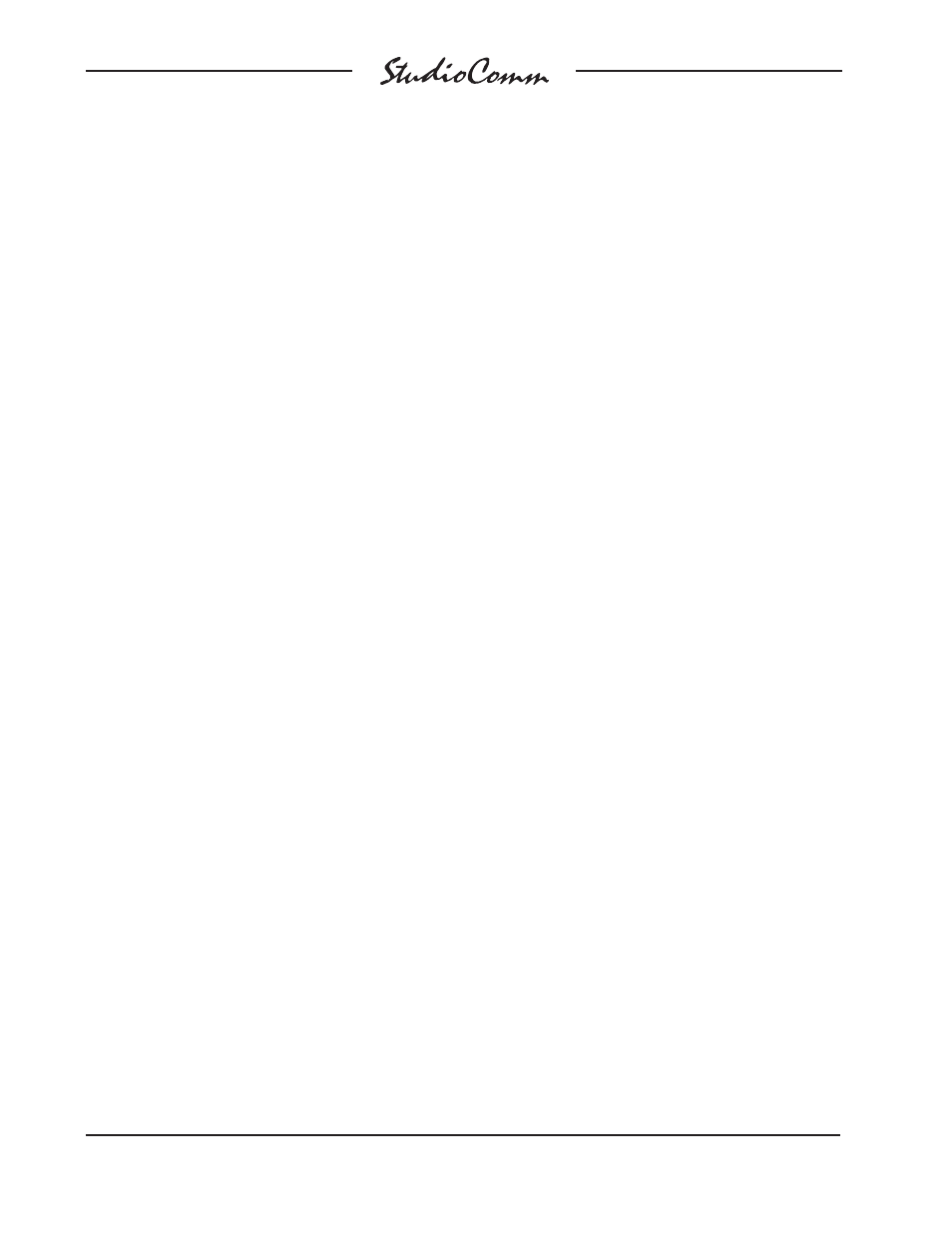Channel solo – Studio Technologies 76B 2008 User Manual
Page 34

Issue 1, July 2008
Model 76B/77B User Guide
Page 34
Studio Technologies, Inc.
for Surround
Dialnorm Enable
Enabling the dialnorm level function sim-
ply requires pressing the dialnorm enable
button. The button provides a “latching”
function so that the selected state is
maintained. An associated LED will light
whenever the function is active. The dial-
norm enable function can only be activated
when the selected input source is a sur-
round signal that has been confi gured as
having dialnorm associated with it. (This
is because dialnorm level data is avail-
able only for that specifi c source.) When
enabled, as the dialnorm level changes
the monitor output level will automatically
increase or decrease as appropriate. Dur-
ing confi guration of the system a dialnorm
reference level was entered. This level,
typically in the range of –27 to –24 dB, is
compared to the incoming dialnorm level
value. If the current dialnorm level is less
than the reference value the output level is
increased by the difference. If the current
dialnorm level is greater than the reference
value the output level is decreased, again
by the difference. Note that dialnorm lev-
els are limited to a range of –31 to –1 dB.
This restricts the maximum amount of level
control to 30 dB.
The 4-digit display, when selected for
output level display mode, will display all
level changes as they occur, including
level changes due to dialnorm activity. The
current dialnorm level value can itself be
viewed by selecting the display dialnorm
mode.
In either display mode the decimal
point “dot” in the lower-right corner of the
4-digit display will light whenever the cur-
rent dialnorm value matches the dialnorm
reference value. This topic is described in
greater detail in the Display and Display
Mode section later on in this section. The
Technical Notes section of this guide also
will provide additional useful information
about dialnorm.
Rotary Level Control
The rotary level control is used to manually
adjust the surround monitor output level. It
is active whenever the reference level func-
tion is not active. The level control provides
the ability to adjust the monitor output level
over a 70 dB range. Technically the rotary
level control is a 24-step-per-revolution
mechanical encoder. The amount of level
change in dB per step (“click”) will depend
on how quickly the control is turned. When
changed slowly, each step represents a
0.5 dB change in level. In this case, to
traverse the entire level range would re-
quire rotating the control more than four
full turns. But the Model 77B’s software
detects when the control is rotated more
quickly and increases the amount of level
change in dB per step. A little experimenta-
tion will allow the user to acquire a good
“feel” for how best to use the control. The
reference LED will fl ash when the rotary
level control sets the output level to be the
same as the stored reference level. When-
ever the rotary level control is used to set
the output level for minimum, the monitor
output channels will automatically mute.
Technically, this has the same effect as
when the mute all function is active.
Channel Solo
The channel solo function allows specifi c
channels to be selected for individual or
group “solo” monitoring. The function takes
place electrically “after” the input source
selection, downmix, and level control
functions. Two solo modes are available,
normal and channel pop. In the normal
